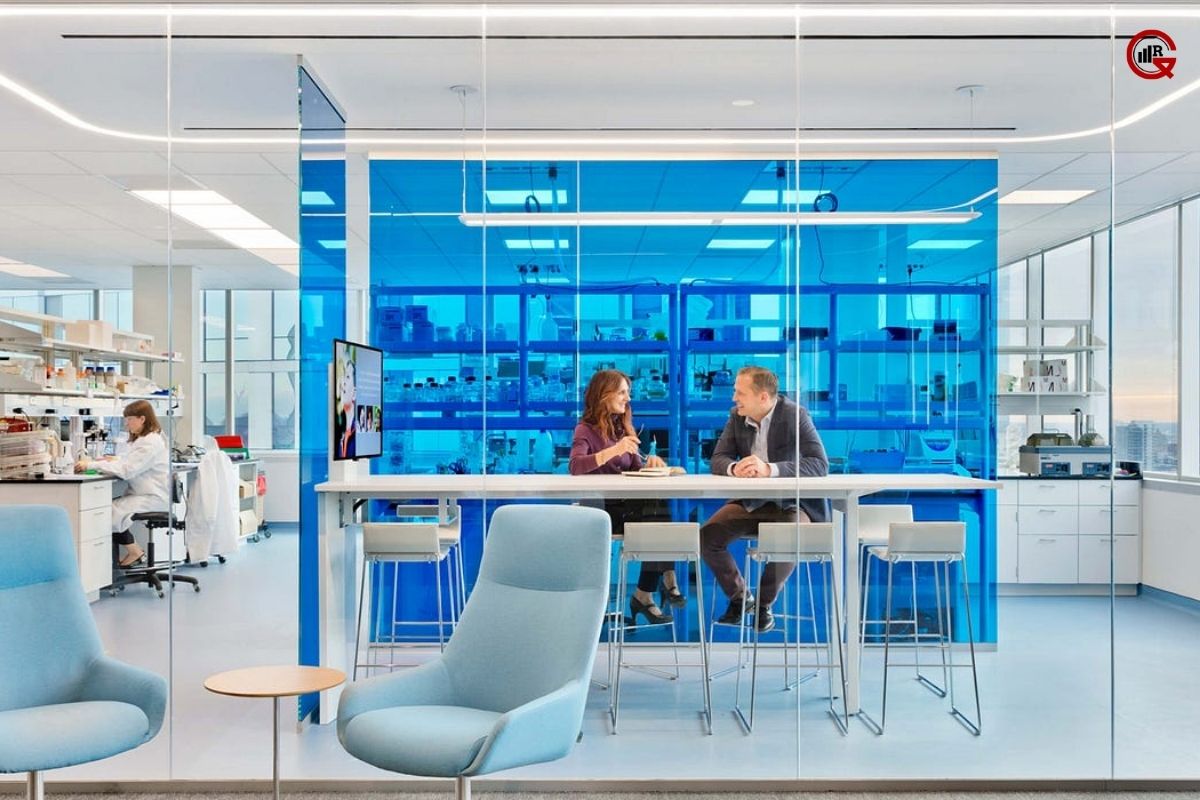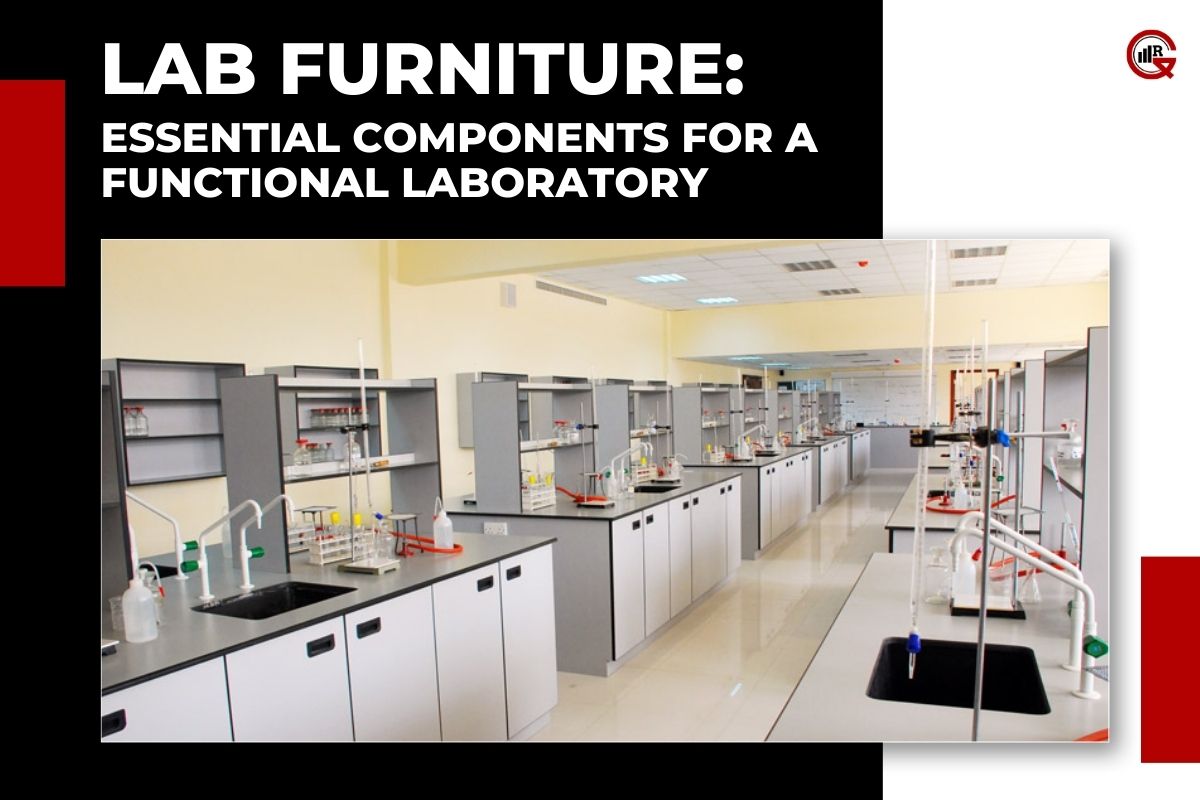(Source – LinkedIn)
Laboratories are specialized environments designed for scientific research, experimentation, and analysis. The efficiency and safety of these activities heavily depend on the quality and functionality of lab furniture. It encompasses a wide range of equipment and fixtures, including workbenches, storage cabinets, fume hoods, and seating, each playing a crucial role in creating an optimal working environment. This article explores the different types of lab furniture, their specific functions, and the importance of selecting the right furniture to meet the unique needs of various laboratory settings.
Types of Lab Furniture
Lab furniture is designed to cater to the diverse requirements of different scientific disciplines. The key types of furniture include:
- Lab Workbenches
- Storage Cabinets and Shelving
- Fume Hoods and Ventilation Systems
- Seating and Ergonomic Furniture
- Specialized Laboratory Furniture
1. Lab Workbenches
Lab workbenches are the cornerstone of any laboratory, providing a stable and durable surface for conducting experiments and handling sensitive equipment.
Standard Workbenches:
Standard lab workbenches are typically made from materials such as stainless steel, epoxy resin, or phenolic resin. These materials are chosen for their durability, chemical resistance, and ease of cleaning. Standard workbenches are suitable for general-purpose use in various types of laboratories.
Chemical-Resistant Workbenches:
In laboratories where handling of corrosive chemicals is common, chemical-resistant workbenches are essential. These benches are coated with chemical-resistant materials to prevent damage and ensure longevity.
Mobile Workbenches:

Mobile workbenches are equipped with wheels, allowing them to be easily moved and repositioned as needed. This flexibility is beneficial in dynamic lab environments where the layout may need to be frequently adjusted.
2. Storage Cabinets and Shelving
Proper storage solutions are critical for maintaining an organized and efficient laboratory. Storage cabinets and shelving provide secure and accessible spaces for storing chemicals, equipment, and documents.
Chemical Storage Cabinets:
Chemical storage cabinets are designed to safely store hazardous chemicals. They are often constructed from materials that can withstand chemical spills and include ventilation systems to prevent the buildup of fumes. Some cabinets are also fire-rated to protect contents in the event of a fire.
General Storage Cabinets:
These cabinets are used for storing lab supplies, equipment, and personal protective equipment (PPE). They come in various sizes and configurations to accommodate different storage needs.
Shelving Units:
Shelving units provide additional storage space and can be mounted on walls or integrated into workstations. Adjustable shelves allow for customization to fit various sizes of equipment and supplies.
3. Fume Hoods and Ventilation Systems
Fume hoods and ventilation systems are essential for maintaining a safe laboratory environment by controlling exposure to hazardous fumes and airborne contaminants.
Ducted Fume Hoods:
Ducted fume hoods are connected to an external ventilation system that expels hazardous fumes outside the building. They provide a high level of protection for handling volatile chemicals and are commonly used in chemistry and biology labs.
Ductless Fume Hoods:
Ductless fume hoods use activated carbon filters to capture and neutralize hazardous fumes before recirculating clean air back into the lab. These hoods are more flexible and easier to install than ducted systems but require regular filter maintenance.
Laminar Flow Hoods:
Laminar flow hoods provide a sterile environment for working with sensitive materials by directing filtered air across the work surface. They are used in microbiology, pharmaceuticals, and electronics manufacturing.
4. Seating and Ergonomic Furniture

Ergonomic furniture is essential for ensuring the comfort and well-being of laboratory personnel, especially during long hours of work.
Lab Stools and Chairs:
Lab stools and chairs are designed to provide ergonomic support and comfort. They are typically adjustable in height and feature materials that can withstand frequent cleaning and exposure to chemicals.
Anti-Fatigue Mats:
Anti-fatigue mats are placed on the floor in areas where lab personnel stand for extended periods. These mats reduce strain on the legs and lower back, improving comfort and productivity.
5. Specialized Laboratory Furniture
Certain laboratories require specialized furniture tailored to specific tasks and equipment.
Microscope Workstations:
Microscope workstations are designed to provide a stable and vibration-free surface for using microscopes. They often include integrated lighting and storage for microscope accessories.
Balance Tables:
Balance tables are specially designed for precise weighing tasks. They feature heavy, stable surfaces that minimize vibrations and ensure accurate measurements.
Cleanroom Furniture:
Cleanroom furniture is designed for use in controlled environments where minimizing particulate contamination is crucial. This furniture is constructed from materials that do not shed particles and are easy to clean.
Importance of Selecting the Right Lab Furniture

Selecting the right lab furniture is crucial for several reasons:
Safety:
Proper lab furniture enhances safety by providing appropriate storage for hazardous materials, ensuring adequate ventilation, and reducing the risk of accidents. For instance, chemical storage cabinets and fume hoods protect users from exposure to harmful substances.
Efficiency:
Well-designed lab furniture contributes to the efficient use of space and resources. Modular and adjustable furniture allows laboratories to adapt to changing needs and workflows, maximizing productivity.
Durability:
Laboratory furniture must withstand harsh conditions, including exposure to chemicals, frequent cleaning, and heavy use. Investing in high-quality, durable furniture ensures longevity and reduces the need for frequent replacements.
Ergonomics:
Ergonomically designed furniture enhances the comfort and well-being of lab personnel, reducing the risk of musculoskeletal disorders and improving overall productivity.
Compliance:
Many laboratories must adhere to strict regulations and standards regarding safety and hygiene. Choosing compliant lab furniture helps laboratories meet these requirements and avoid potential legal issues.
Conclusion
Lab furniture is a critical component of any functional laboratory, directly impacting safety, efficiency, and productivity. From sturdy workbenches and secure storage cabinets to advanced fume hoods and ergonomic seating, the right furniture creates an environment where scientific research and experimentation can thrive. Understanding the specific needs of different laboratory settings and selecting appropriate furniture not only ensures compliance with safety standards but also fosters a productive and comfortable workspace. As scientific research continues to advance, the demand for innovative and adaptable lab furniture will undoubtedly grow, driving further improvements in laboratory design and functionality.






